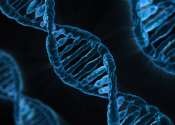Gene-edited disease monkeys cloned in China
The first cohort of five gene-edited monkey clones made from fibroblasts of a monkey with disease phenotypes were born recently at the Institute of Neuroscience (ION) of the Chinese Academy of Sciences (CAS) in Shanghai. ...
Jan 23, 2019
1
374








